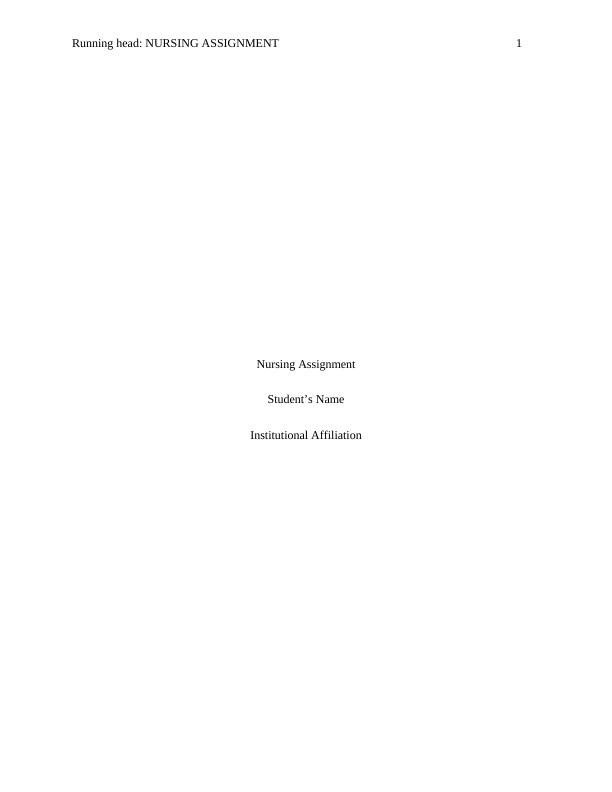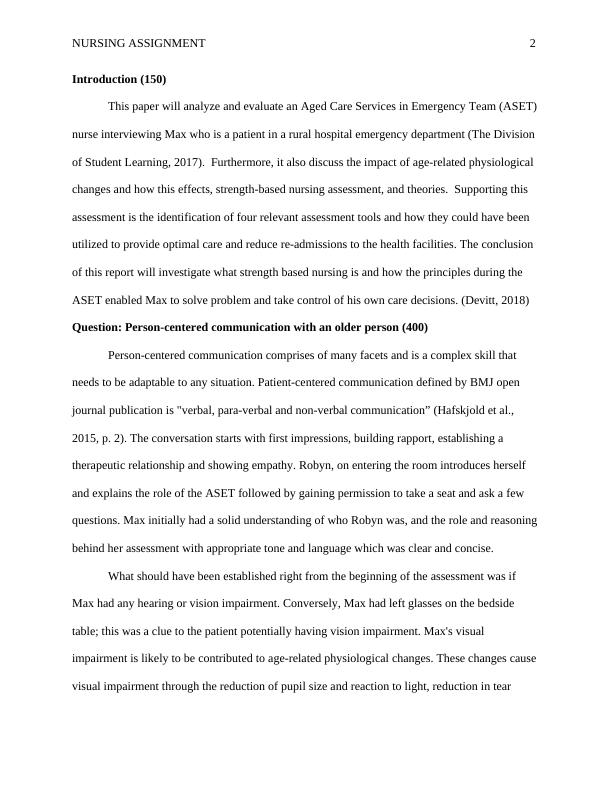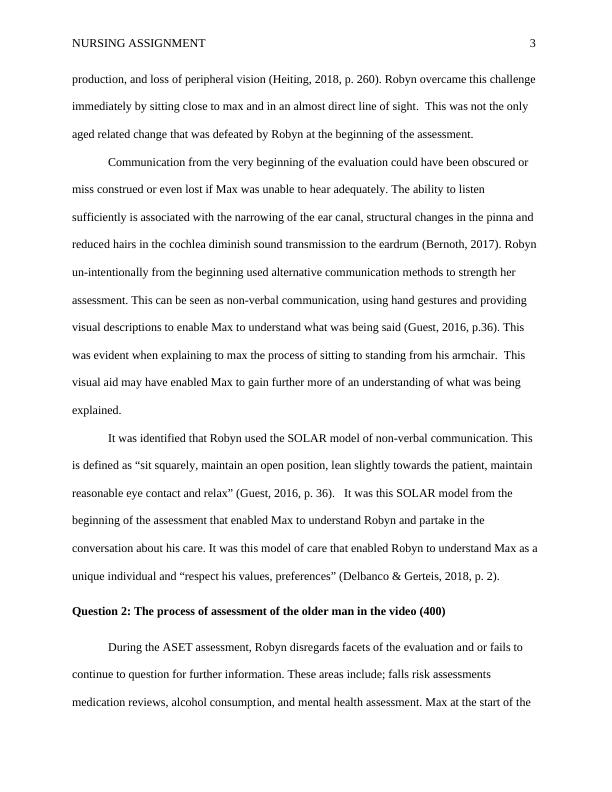Aged Care Services in Emergency Team (ASET) Nurse Interviewing Max: A Critique and Analysis
10 Pages2586 Words271 Views
Added on 2023-06-05
About This Document
This paper analyzes and evaluates an Aged Care Services in Emergency Team (ASET) nurse interviewing Max who is a patient in a rural hospital emergency department. It discusses the impact of age-related physiological changes and how this affects strength-based nursing assessment and theories. It also identifies four relevant assessment tools and how they could have been utilized to provide optimal care and reduce re-admissions to the health facilities.
Aged Care Services in Emergency Team (ASET) Nurse Interviewing Max: A Critique and Analysis
Added on 2023-06-05
ShareRelated Documents
End of preview
Want to access all the pages? Upload your documents or become a member.
The Assessment ASET Nursing - Communication, Assessment Process, and Strengths-based Nursing
|11
|2604
|385
Nursing Assessment Critique: Communication and Assessment of an Older Patient
|8
|2311
|122



